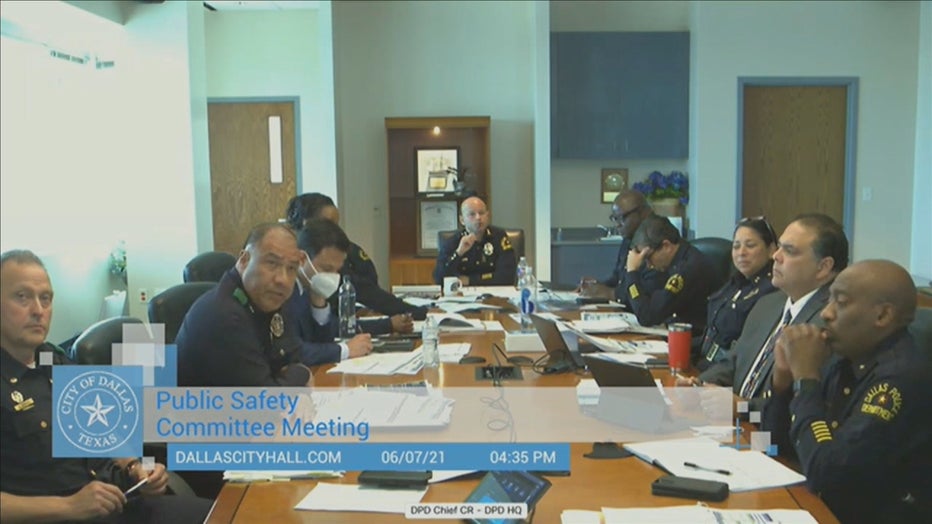Despite longer 911 wait times, Dallas police chief says crime reduction plan is slowly working
Despite longer 911 wait times, Dallas police chief says crime reduction plan is slowly working
Newly-released data to Dallas City Council’s public safety committee is raising concern about how long it’s taking officers to arrive.
DALLAS - The Dallas police chief says there is improvement in the effort to reduce violent crime. He gave an update to city council members on Monday.
There are signs that crime is starting to trend downward, but there are some concerns about how long it’s taking officers to arrive on scene.
Newly-released data to Dallas City Council’s public safety committee is raising concern about how long it’s taking officers to arrive.
Councilmember Cara Mendelsohn points to city data comparing May of this year to the same month last year.
"I mean, these are some pretty shocking numbers to me," she said.
It reveals it’s taking officers roughly an extra minute to get to priority one calls where there’s reason to believe a threat to life exists.
Dallas police chief says crime reduction plan is already showing results
The Dallas police chief says there is improvement in the effort to reduce violent crime. He gave an update to city council members on Monday.
Officers are taking nearly 15 minutes longer for priority two calls where there’s a major risk of property loss, nearly two hours longer for priority three calls where a crime is in progress but there’s no significant threat, and then even longer for priority four calls.
"More than two hours increase for priority four calls. I mean I know that you’re addressing it, but I just think that these are such shocking numbers," Mendelsohn said. "This is a basic service. We expect to be able to call 911 and have people show up."
Dallas’ 911 call center is staffed at 76%. It’s short more than two dozen call takers, and it’s seeing an increase in call volume.
On top of that, the department says a week-long severe weather event in May lowered its service levels. Still, it says it’s working to make improvements.
Overall crime is down from this time last year mostly due to a reduction in robberies and burglaries. But assaults and homicides are still trending higher than this time last year.
Then there’s Chief Eddie Garcia’s violent crime plan aggressively targeting areas with high concentrations of violent crime. He’s optimistic about the results thus far. The crime plan focuses on targeting small areas that generate violent crime that will have a reduction citywide.

The chief says a combination of high-profile patrol, surveillance and arrests of repeat offenders is making the difference.
It's been one month since Chief Garcia implemented his crime reduction plan, and he says it's working.
"Obviously, we're not doing any touchdown dances but it's getting warmer," he said.
Chief Garcia told the Public Safety Committee that overall violent crime, which includes murders, aggravated assaults and robberies, is down 5% year-to-date.
"We hope to be turning this trend if it hasn't started to already," he said.
On May 7, patrol officers began focusing on 47 city grids identified by DPD data and criminologists as having a high concentration of violent crime. Officers made 3,000 arrests and seized over 260 pounds of narcotics.
The chief says there has been an increase in sexual assaults. Each week, the command staff looks at the crime data to see which grids to focus on.
"We’ve got a lot of work to do," Garcia said. "But the rank and file the men and women are doing a tremendous job."
Dallas PD also says they’ve had success with a pilot program to tackle street racing. The city installed speed bumps at Botham Jean Boulevard and Forest Avenue in South Dallas last month and reflectors at Singleton and Bernal, which are the two hottest spots for street racing.
"We have not received any calls related to that nor have we seen any events pop up in those two locations," Garcia said.
Dallas Police Association President Mike Mata was asked about the chief's plan at a news conference last Thursday.
"It's been better explained to the rank and file, what we're going to do and how we're going to get there," he said. "We just have to stand behind him. As of now, he's doing enough for us to stand behind him. The problem is we still don't have enough manpower."
Mata says the department's overtime budget for the year has already been exhausted. It's not a topic that was discussed during the public safety briefing on Monday.

